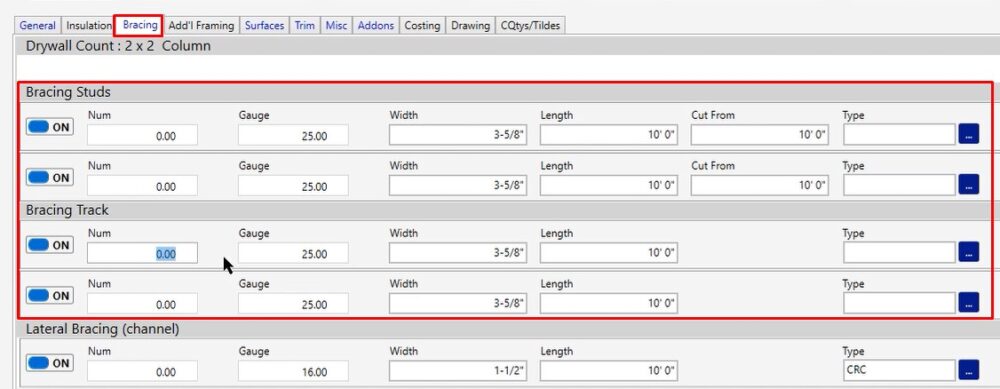 Estimating Edge’s team of experienced construction professionals and software engineers have developed the industry’s smartest takeoff and estimating software solutions for competitive estimates.
Estimating Edge’s team of experienced construction professionals and software engineers have developed the industry’s smartest takeoff and estimating software solutions for competitive estimates.
Don’t just estimate faster. Estimate better.®
- /
- /
- /
- /
DW Count Condition Properties – General, Insulation, and Bracing Tabs
This video covers the drywall count condition properties for the general, insulation and bracing tabs in v12.
Today we’re going to cover the drywall count condition properties. This is most commonly used in the format of a column, so that’s what we’re going to be using as the condition to show you today.
General Tab
- Description – Type in the name of the condition which you would like to have this populated as
- LF Framing – Footage of framing
- Framing Height – Height of framing
- C Fields – User definable fields that you can customize. We can use this information to pull in the descriptions or to pull in the formulas.
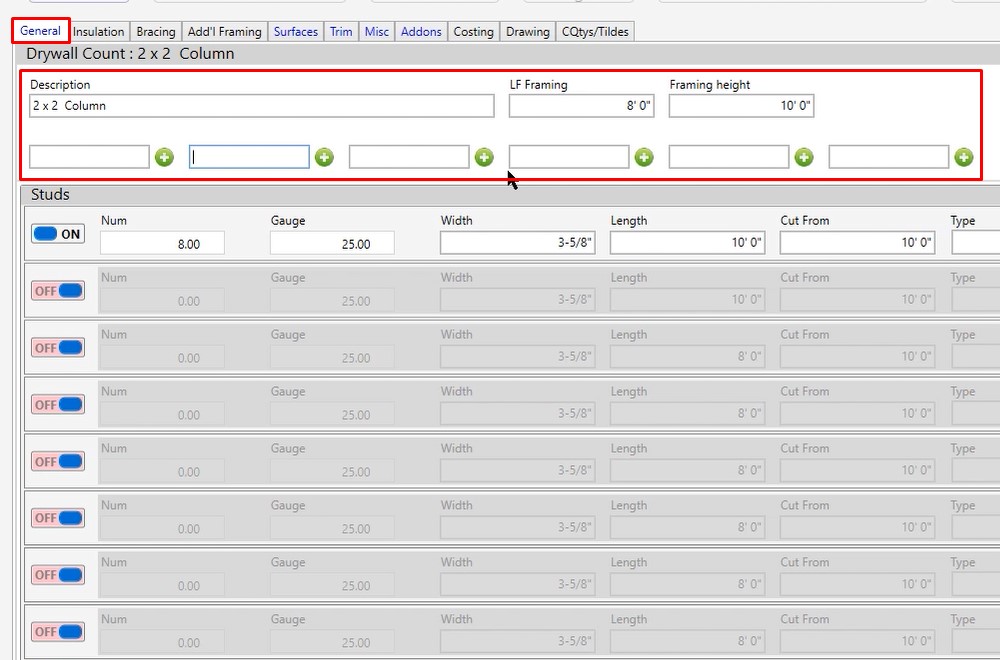
General Tab – Studs
You’ll notice that we provide eight fields for your studs, so if you didn’t want to type in the number eight, but you want to have the individual studs being calculated, you could go ahead and do that.
- Num – Number of studs
- Gauge – Gauge of studs
- Width – Width of studs
- Length – Length of studs
- Cut From – If using larger stud and cutting into smaller pieces
- Type – SSMA code, nomenclature or flange style
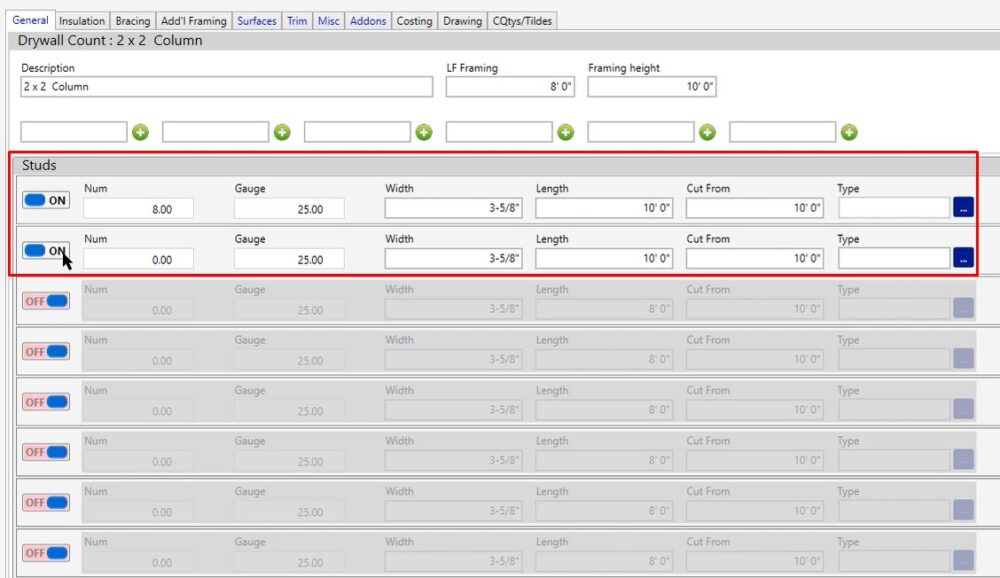
General Tab – Track
In this case you’ll notice we’re only using one track field, and that’s because we’re going to be utilizing the same track at both the bottom and the top of the column.
- Num – Number of runs
- Gauge – Gauge of metal
- Width – Width of metal for the track
- Length – Length of the track
- Type – SSMA code, nomenclature or the flange style that you’re going to be using
If you were going to be using two different flanges for your track, turn on track number two and populate this one run of each, and you should be good to go on your project.
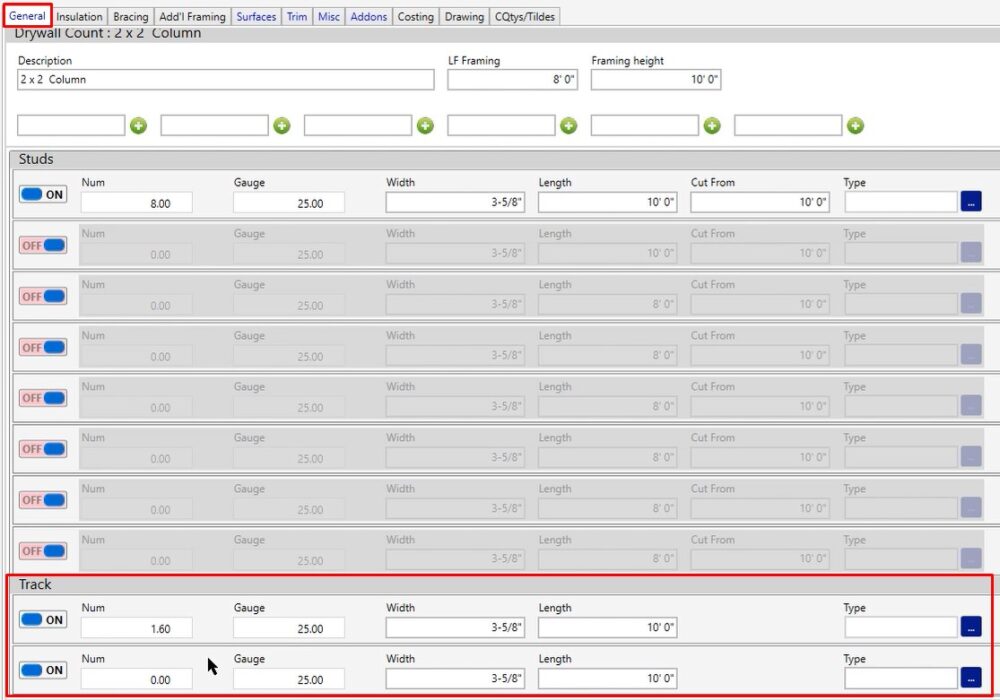
Insulation Tab
Insulation Height – This does need to be filled out so we can help you get the correct description for your labor line if you are using it.
Insulation Tab – Batts Insulation
- SF – Square footage of batts you are putting in
- Thickness – Thickness of the insulation you are going to be running
- Width – How often are your studs going to be spaced on your column
- Type – Type of insulation you are using
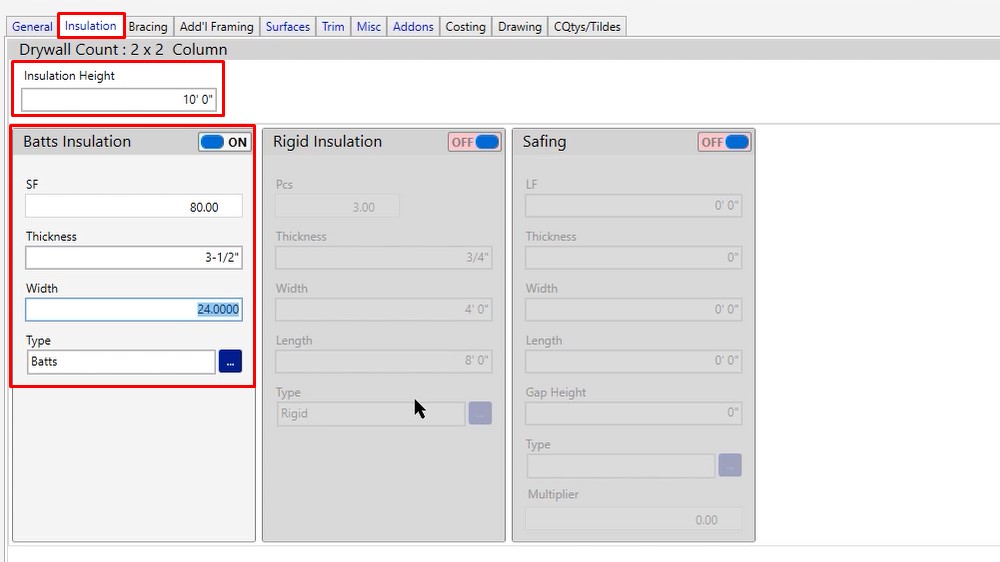
Insulation Tab – Rigid Insulation
- Pcs – Number of pieces that you’re going to need.
- Thickness – Thickness of the rigid insulation you’re going to be producing
- Width – Width of the board that you’re going to be ordering
- Length – Length of the board you’re going to be ordering
- Type – Type of rigid board that you’re going to be producing on this project
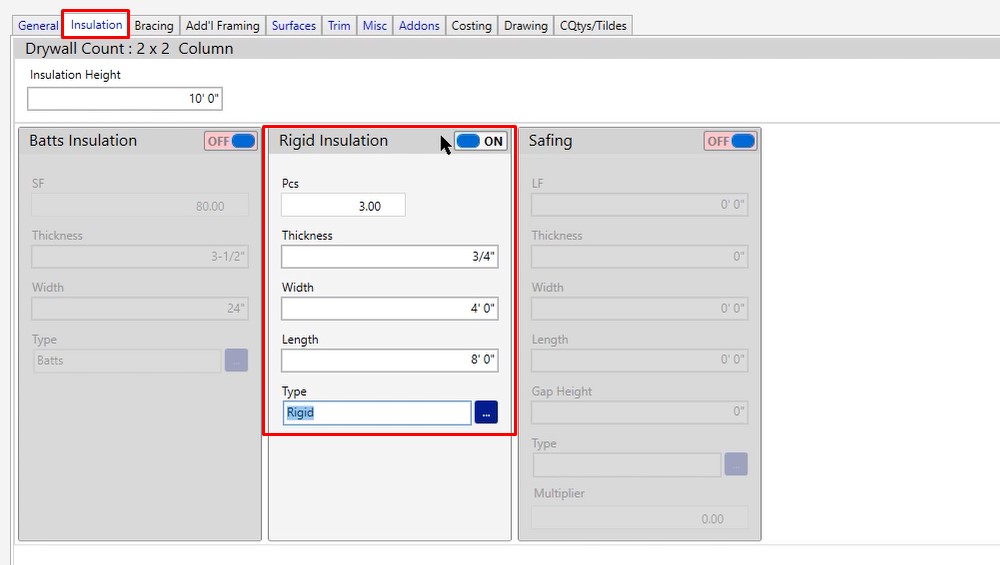
Insulation Tab – Safing
- LF – Total lineal footage that you’re going to need for where this column is going to touch the deck for your fire safing insulation
- Thickness – Thickness that you’re going to need to provide
- Width & Length are also required
- Gap Height – The distance from the top of the flute to the top of your track
- Type – Type of insulation that you’re using
- Multiplier – If you wanted to apply a multiplier based on the flutes you could, but most of the time this is going to be the number one.
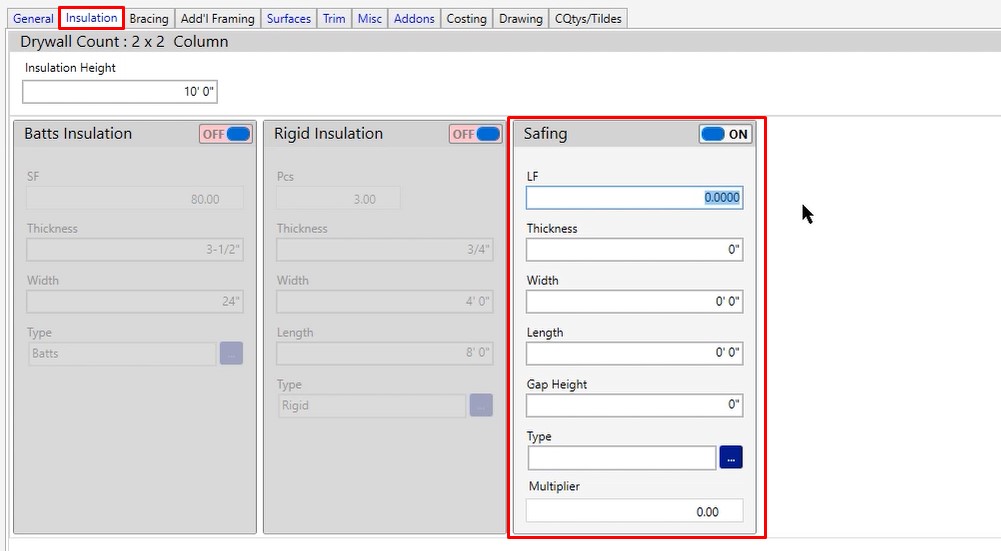
Bracing Tab
In the bracing tab, we’re going to be calculating additional bracing studs and or bracing track. If you needed to run any channel through this column, we would also be calculating that information here.
Bracing Tab – Bracing Studs & Bracing Track
- Num – Number of studs and or number of pieces of track that you’re going to provide for every count that you click on the take off screen
- Gauge – Gauge of metal
- Width – Width of the metal that you’re producing
- Length – Length of metal you’re producing
- Cut from -If you’re going to be ordering a larger stud and cutting those down
- Type – SSMA code, nomenclature or the flange style that you’re working with
Bracing Tab – Lateral Bracing (channel)
- Num – Number of runs of channel and the height of that column
- Gauge – The gauge that you’re working with
- Width and length – Width and length of channel
- Type – Type of channel you’re using
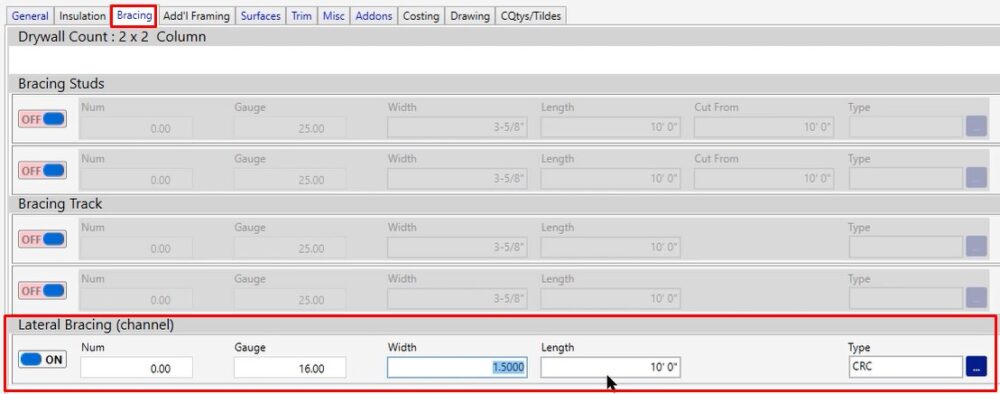
If you have any other additional questions feel free to reach out to our tech team and we’d be happy to assist you in those questions and point you in the right direction.

